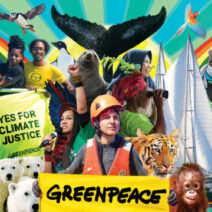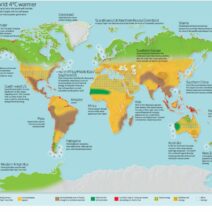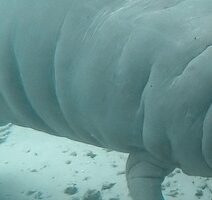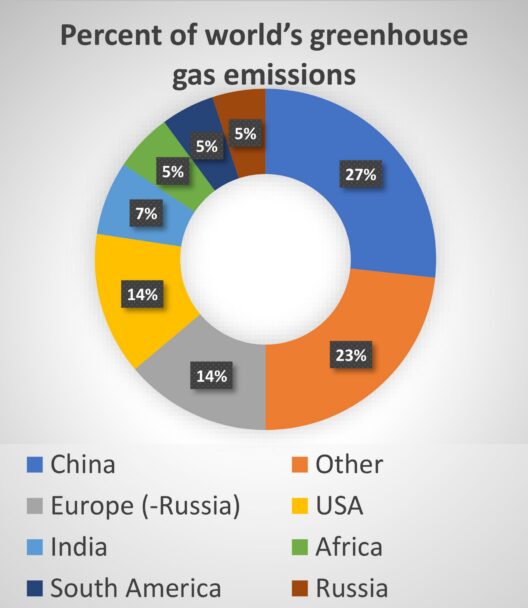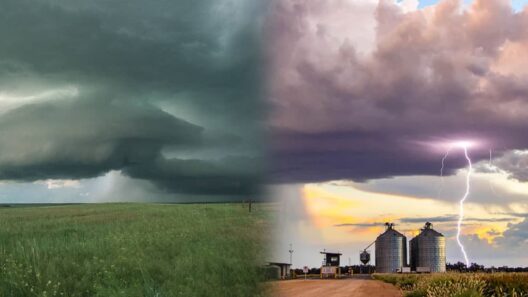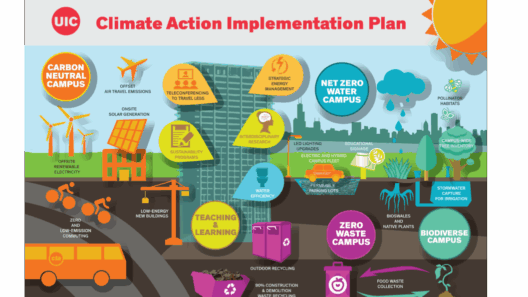The phenomenon of climate change is often dismissed by some as mere fluctuations in weather patterns, astringent anomalies in an otherwise predictable system. Yet, to accept this reductionist view is akin to mistaking the tip of an iceberg for the entirety of the marvel lurking beneath the surface. Climate change represents not only a series of weather aberrations but an existential threat demanding urgent, comprehensive action from humanity.
The planet’s climate is like a finely tuned orchestra, where each instrument plays a critical role in the harmonious symphony of life. When one note goes awry, the entire composition risks discord. The transformation in our climate is reminiscent of a maestro losing control, resulting in sonorous chaos that reverberates through ecosystems and human societies alike. Understanding this nuance is critical to grasp the staggering implications of climate change.
At the heart of this issue lies the vociferous surge in greenhouse gas emissions, primarily due to human activity. The relentless burning of fossil fuels, deforestation, and industrial processes release carbon dioxide, methane, and other potent pollutants into the atmosphere. This relentless barrage acts as a thermal blanket, trapping excess heat and instigating a cascade of climatic alterations.
These changes manifest in myriad ways, often first perceived in the form of extreme weather events. The once predictable patterns of seasons are disrupted; prolonged droughts grip the land like an unyielding vice, while torrential downpours unleash floods reminiscent of a deluge. The consequences are dire—agricultural output plummets, water sources dwindle, and biodiversity falters. Nature is resilient, yet it possesses limits. When pushed too far, the equilibrium collapses, leading to irreversible damage.
The inexorable rise in global temperatures has grave implications beyond immediate weather fluctuations. Coral reefs—often described as the rainforests of the sea—are dying off at an alarming rate due to ocean acidification and temperature spikes. These underwater utopias are not mere aesthetic wonders; they serve as critical habitats supporting a vast array of marine life that provides sustenance and livelihood for millions worldwide. The loss of these ecosystems is akin to dismantling a piece of the proverbial life support system we depend on.
Furthermore, climate change exacerbates socio-economic inequalities. The most vulnerable populations—those with the least resources and greatest exposure—bear the brunt of environmental degradation. This inequity is stark; while affluent nations often have the capacity to adapt to changing climates, poorer countries face the specter of climate-induced disasters that threaten their very existence. Displacement becomes a grim reality as entire communities are uprooted, seeking refuge from regions rendered inhospitable. This migration is not merely a physical relocation; it is emblematic of a catastrophic failure to safeguard our planetary home.
Metaphorically speaking, climate change can be regarded as a heaving beast—the manifestation of decades of neglect fed by short-term interests. As the beast stirs, it not only threatens destruction but also holds a mirror to humanity’s unsustainable practices. Yet, the duality of this creature is profound; alongside despair lies the potential for transformation. It beckons humanity towards innovation and resilience, urging us to envisage a sustainable future.
In grappling with the magnitude of the climate crisis, we must pivot from apathy to action. This entails both macro and micro-level interventions. On a global scale, countries must collaborate through frameworks and treaties that hold them accountable while fostering sustainable policies. Implementing rigorous regulations on emissions and incentivizing renewable energy sources are pivotal steps in this collective endeavor.
Equally important is grassroots activism—individuals banding together, mobilizing communities, and influencing local legislation. Personal choices matter immensely; from reducing waste to embracing sustainable consumerism, each individual has the power to impact the course of climate change. The essence of activism lies not only in protest but in educating peers, igniting conversations, and inspiring collective responsibility.
Education plays a key role in dismantling ignorance surrounding climate issues. Comprehensive environmental education should be integrated into curricula, fostering a generation of informed citizens equipped to confront challenges with critical thinking and innovative solutions. As climate advocates, it is imperative that we engage diverse voices, emphasizing that the narrative surrounding climate change is not solely scientific— it is deeply interwoven with social justice, economic fairness, and ethical stewardship.
However, as humanity ventures down the path of mitigation and adaptation, one must not underestimate the psychological stakes involved. The looming threat of climate change elicits feelings of dread, anxiety, and despair. Thus, while recognizing the gravity of our predicament, it is crucial to cultivate narratives that inspire hope and resilience. Stories of communities successfully implementing sustainable practices and innovative technologies can serve as compelling beacons, illuminating the path forward.
In conclusion, climate change is not merely bad weather; it is an existential threat with far-reaching ramifications. It convulses our landscapes, disrupts ecosystems, and compounds social inequalities. Yet, within this daunting reality lies opportunity—the potential for profound change and a redefined relationship with our planet. By embracing a unified, multifaceted approach that merges science, advocacy, and education, we can strive to mitigate this threat and aspire towards a sustainable future where humanity not only survives but flourishes alongside the natural world.
